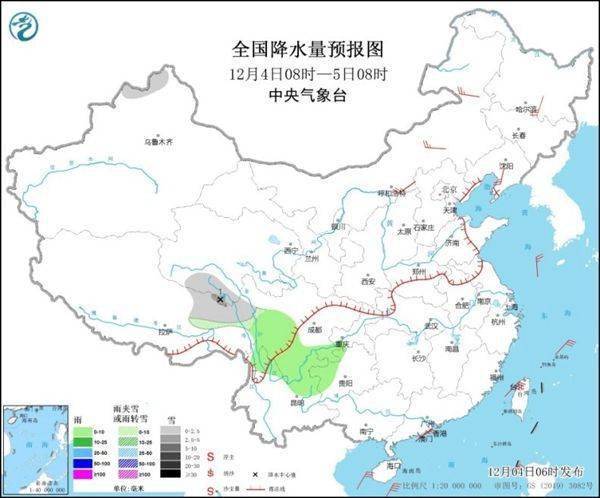China Weather News this weekend (December 4th to 5th), rain and snow are scarce in most parts of the country, and snowfall mainly occurs in parts of Tibet and other places. The cold air has a limited range of influence, and the temperature in most areas remains warmer than usual in the same period of the year. Only in the Northeast has the temperature fluctuated sharply. At the same time, there will be haze in the central and southern parts of North China, Huanghuai and other places.
Most of the country’s precipitation is scarce over the weekend, and some areas of Tibet continue to snow
Recently, most of the central and eastern regions are dominated by sunny and dry weather, and the relative humidity in many places from northern China to Jiangnan and southern China is less than 30%. The rain and snow are concentrated in the southwest, especially Tibet. Yesterday there were snow, rain or sleet in parts of western and northeastern Tibet. Local precipitation in Nyalam was 10-14 mm.
Today, most areas of the country are still dominated by fine weather. The Central Meteorological Observatory predicts that there will be light to moderate snow in northern Xinjiang, northeastern Tibet, and southern Qinghai. There was light rain in parts of western and southern Sichuan, western Guizhou, and northeastern Yunnan.
From tomorrow night, a new round of snowfall will begin to move eastward from western Tibet and southwestern Xinjiang. It will cover most of the Qinghai-Tibet Plateau and affect the eastern part of the northwestern region around the 7th.
Meteorological experts reminded that local snowfall is relatively strong in southwestern Tibet, and the public should pay attention to the impact of heavy snowfall on production and life and take protective measures. At the same time, the weather in most parts of the country is dry, and the public should pay attention to fire safety and beware of fires.
The development of haze weather in Huanghuai, North China and the fluctuation of temperature in Northeast China
Today and tomorrow, most areas of my country will continue to be warmer than normal. The highest temperature in central and southern North China is above 10°C, the temperature from Huanghuai to Jiangnan is generally between 15°C and 20°C, and southern China and other places exceed 20°C.
With the weakening of the cold air force and the establishment of quiet and stable weather, the atmospheric diffusion conditions in the central and southern parts of North China, Huanghuai and other places are normal today and tomorrow, and there will be light to moderate haze.
Only the northeast region has severe temperature fluctuations. Under the influence of cold air, the temperature dropped by 4~8℃ in most of the northeast and northeastern Inner Mongolia yesterday. Today, the temperature in parts of Heilongjiang, Jilin and other places gradually rises, and the temperature increase will reach 8℃ to tomorrow. 12℃, local over 14℃. Among them, the highest temperature in Shenyang and Changchun will rise to 5°C or above tomorrow, and the highest temperature in Harbin will also rise to above 0°C.
Beginning on the 6th, a wider range of cold air hits. The temperature in North China, Huanghuai and Northeast China will drop by 4 to 6°C, and the local temperature in Northeast China will drop by 8 to 10°C. The temperature in many places will gradually change to Close to the level of the same period in normal years, the public still needs to pay attention to nowcasts due to the long timeliness of forecasts.Return to Sohu to see more
Editor:
Disclaimer: The opinions of this article only represent the author himself. Sohu is an information publishing platform. Sohu only provides information storage space services.
.
